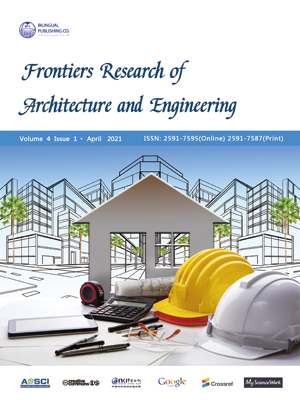The Evolution and Trend Analysis of Rural Planning Research Hotspots under the Background of Territorial and Spatial Planning
DOI:
https://doi.org/10.30564/frae.v4i1.2751Abstract
Under the background of the new round of land and space planning, the research on rural planning in China is undergoing positive changes. Based on the past emphasis on engineering thinking and planning technology, it has entered the field of planning strategy and planning guidance. The extended development trend shows a research trend of intensified integration with public management disciplines and government governance theories. The intervention of government regulation research will provide a solid theoretical guarantee for the rural revitalization strategy that focuses on planning and planning first. In order to study the rural planning hotspots and trends in the context of territorial and spatial planning, using CiteSpace software to map rural areas from the perspectives of the number of articles, authors, publishing organizations, keyword co-occurrence networks, keyword clustering analysis, hotspot evolution, prominent word analysis, etc. The knowledge map was planned and visualized comparative analysis was carried out.
Keywords:
Rural planning; CiteSpace; Rural revitalization Public management; Knowledge map; Land and space planningReferences
[1] Zhang Runpeng. On the supporting role of the new version of “Urban Land Classification and Planning and Construction Land Standards” on urban planning——an analysis based on the perspective of public policy[J].Planners, 2012(02):17-22.
[2] Huang Yan, Xue Lan, Shi Nan, et al. Promote the development of the discipline of planning at a new starting point—a seminar on the integration of urban and rural planning and public management disciplines[J]. Urban Planning, 2016(09): 9-21.
[3] The Central Committee of the Communist Party of China and the State Council. Several opinions on establishing a land and space planning system and supervising its implementation [N]. People’s Daily, 2019-05-24(1).
[4] Dai Fei, Qiu Yue, Bi Shibo, et al. Dynamic analysis of landscape architecture development from the perspective of territorial space planning[J]. Landscape Architecture, 2020,27(1): 12-18.
[5] Li Xuan, Zeng Xiaoming. The number of articles, author statistics and citation analysis of “Chinese Fishery Sciences” in 2009[J].Journal of Agricultural Library and Information Science,2010(10):58-64.
[6] Li Hongyi, Zou Runyan, Yin Qianliang, et al. Knowledge graph analysis of domestic land and space planning research based on Citespace[J]. Land and Resources Science and Technology Management, 2018, 35 (3): 53-64.
[7] Zhao Hongjuan. Analysis of the Knowledge Graph of the Evolution of Rural Planning Theory and Practice Research [J]. Collection of Papers on Urban Development and Planning, 2019.
[8] Lu Yangchun, Gao Xiaohui, Liu Min. The current status, hotspots and prospects of domestic research on rural revitalization-an empirical analysis based on the Citespace knowledge graph[J]. West China, 2019(02):114-124.
[9] Cai Jiandong, Ma Jing, Yuan Yuan. The evolution of foreign CSCL theory and frontier hot issues: Visual analysis based on Citespace [J]. Modern Educational Technology, 2012(5):10-16.
[10] Zhao Rongying, Yu Kaipeng, Chen Bikun. Visual comparative analysis of factor research at home and abroad[J]. Information Science, 2014, 3:3-11.
[11] Huang Cui, Zhao Peiqiang, Li Jiang. Quantitative analysis of changes in China’s science and technology
[12] innovation policies based on co-word analysis [J]. Chinese Administration, 2015(09): 115-122.
[13] Chen Yue, Chen Chaomei. The Methodological Function of CiteSpace Knowledge Graph[J]. Studies in Science of Science, 2015, 33(2):242-253.
[14] Sun Ying, Zhang Shangwu. Review and Prospects of Rural Planning Research in my country [J]. Urban Planning Journal, 2017(04):74-80.
[15] Wu Feifei, Yang Zi, Huang Lucheng. Research front detection model based on innovation and interdisciplinarity-
[16] Taking the detection of frontier research in the field of smart materials as an example[J]. Research in Science of Science, 2015(01):11- 20.
[17] Kleinberg,J.Bursty and Hierarchical Structure in Streams. Data Mining and Knowledge Discovery,2003.7(4): 373-393.
Downloads
Issue
Article Type
License
Copyright and Licensing
The authors shall retain the copyright of their work but allow the Publisher to publish, copy, distribute, and convey the work.
Frontiers Research of Architecture and Engineering publishes accepted manuscripts under Creative Commons Attribution-NonCommercial 4.0 International License (CC BY-NC 4.0). Authors who submit their papers for publication by Frontiers Research of Architecture and Engineering agree to have the CC BY-NC 4.0 license applied to their work, and that anyone is allowed to reuse the article or part of it free of charge for non-commercial use. As long as you follow the license terms and original source is properly cited, anyone may copy, redistribute the material in any medium or format, remix, transform, and build upon the material.
License Policy for Reuse of Third-Party Materials
If a manuscript submitted to the journal contains the materials which are held in copyright by a third-party, authors are responsible for obtaining permissions from the copyright holder to reuse or republish any previously published figures, illustrations, charts, tables, photographs, and text excerpts, etc. When submitting a manuscript, official written proof of permission must be provided and clearly stated in the cover letter.
The editorial office of the journal has the right to reject/retract articles that reuse third-party materials without permission.
Journal Policies on Data Sharing
We encourage authors to share articles published in our journal to other data platforms, but only if it is noted that it has been published in this journal.




 Qixi Zheng
Qixi Zheng

